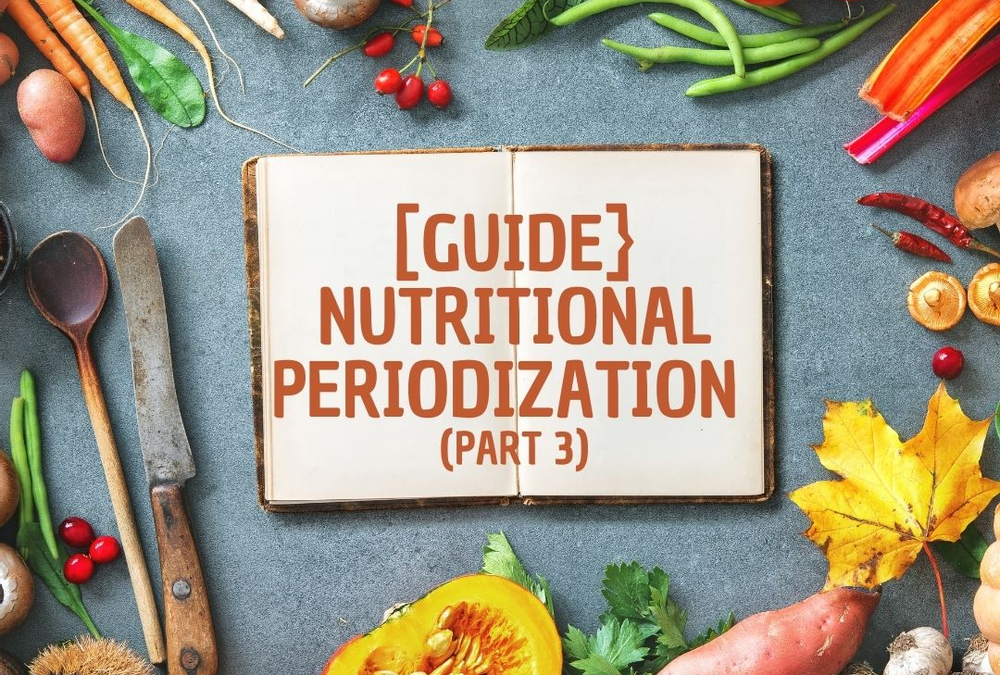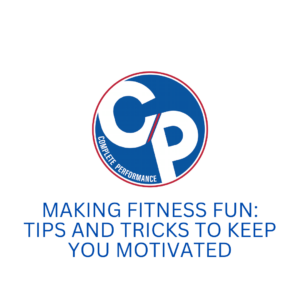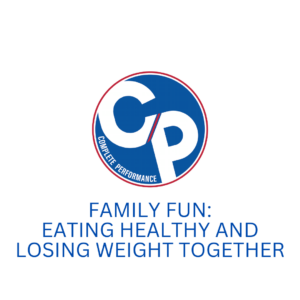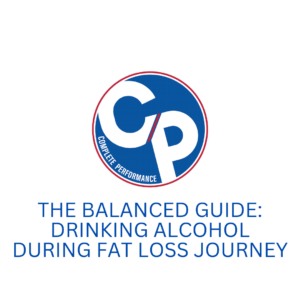BREAKING NEWS – You ARE NOT supposed to diet the rest of your life!
Can you believe it??
Probably not seeing as most of us are stuck in the never-ending cycle of on-again, off-again dieting…
But it’s true, you CANNOT and SHOULD NOT diet for the rest of your life.
Here’s what you might not know – a fat loss phase should really only last 6 to 12 weeks.
Now, that doesn’t mean you flat out halt all thoughts of fat loss every 6 to 12 weeks, but it does mean that any longer in a calorie deficit and you could face some larger health issues (hormonal, digestive, energy, and motivation).
“So, do I just eat whatever I want?”
No because that could lead to even bigger issues AND sabotage all the results you’ve created to this point.
Let me introduce you to Diet Breaks.
Diet Breaks are short stretches of eating at or near maintenance level calories for a variety of scientific and psychological reasons.
The use and implementation of Diet Breaks varies for every individual client, but first, you need to understand WHY you should use Diet Breaks?
Adaptive Thermogenesis
This is the #1 reason coaches implement diet breaks with clients, but you may have NO CLUE what adaptive thermogenesis is…
According to BioMedCentral, adaptive thermogenesis is defined as the regulated production of heat in response to environmental changes in temperature and diet, resulting in metabolic inefficiency.
Quite simply put, your body burns calories in four different ways to make up your metabolism:
- Basal Metabolic Rate (BMR): The number of calories your body burns to stay alive.
- Thermic Effect of Food (TEF): Calories burned during digestion to turn the food you consume into energy.
- Thermic Effect of Exercise (TEE): Calories burned during lifting weights and cardio.
- Non-Exercise Activity Thermogenesis (NEAT): The calories you burn in your everyday movement outside of exercise.
Together these four components adjust and adapt during a fat loss phase to prevent your body from losing too much and becoming too inefficient.
Your BMR decreases as you lose weight because your body becomes smaller.
But BMR is not the only thing affected by a smaller body…
TEE decreases because it requires less energy to move a smaller body.
During a fat loss phase, you’re consuming fewer calories. Assuming your macronutrient composition stays relatively the same, your TEF decreases because the body is burning less energy due to the consumption of less food.
Outside of the impact of these four components, the body responds to a fat loss phase by decreasing the amount of leptin released into the body, which in turn increases hunger levels and decreases energy expenditure.
Now, the opposite happens when you eat in a calorie surplus and gain body fat – the metabolism increases and hunger decreases.
All of this up and down of your metabolism is called adaptive thermogenesis, and the thought process behind utilizing this in a diet breaks is that a brief up-regulation of your metabolism and hormones prevents your metabolism from slowing down TOO much. In addition, it’s a coach’s hope that it helps you end your diet with a faster metabolism and a better hormone profile.
Maintain or Build Muscle
Adaptive thermogenesis is not the ONLY benefit of diet breaks because to be quite honest, you don’t care all that much about your metabolism.
What you care about is losing the fat and building some sexy, lean muscle.
You’re in luck because that’s another excellent reason for utilizing Diet Breaks.
It’s easier to build or maintain muscle when glycogen stores are full.
When you periodically eat at maintenance calories, your muscles glycogen stores are refilled which allows you to train more intensely and build lean muscle.
Psychological
There’s a HUGE mental component to Diet Breaks as well.
At Complete Performance in Circle Pines, I work primarily with active moms who have tried their fair share of diets.
Unfortunately, most of these active moms have been led to believe that eating fewer and fewer calories is the secret to their leanest physique.
And I’m willing to bet that’s not only in Circle Pines, Minnesota…
So, one of my favorite reasons to use Diet Breaks is to teach these active moms (and anyone beat down by diet culture) that eating more calories is OKAY!
Nobody – male, female, or otherwise – wants to live at 1,000 calories per day, so to spend periods of time eating slightly more calories WITHOUT gaining weight is a HUGE psychological win for clients and why I love Diet Breaks.
Adherence Booster
Adherence to a diet also requires a great deal of mental strength.
It’s HARD to stick to a calorie deficit for 6 to 12 weeks.
You’re eating less, saying “No” to more things, feeling hungry more often, and experiencing the effects of body fatigue as a result of decreased calorie consumption.
From my experience, our Complete Performance clients (both in-person and online) struggle to stick to a diet any longer than 12 weeks.
Past this point, things begin to slide, and you allow yourself a few more cheat meals and days than before.
Eventually, this leads you right back into the cycle of always feeling like you’re dieting but never seeing any results.
Once adherence begins to wane, a diet break can help restore metabolism, hormones, and your mental focus to help you get back on track once you resume a cut.
Great Practice
Last, but not least, Diet Breaks are great for teaching you how to live at maintenance.
You WILL NOT spend the rest of your life in a calorie deficit, and while it’s my job to ensure that is the case, it’s also my job to give you the knowledge and skills to maintain the results on your own in the future.
If I’m being totally honest, most clients STRUGGLE in their first Diet Break.
It’s your first opportunity to consume some of those things you’ve been missing and again face some of those bad habits.
But I also know that most clients learn SO MUCH about themselves during their first Diet Break.
You learn which bad habits you need to completely move past.
You learn which foods and drinks you really want to keep in your life.
You learn the people, settings, and behaviors that do and do not set you up for success.
Diet Breaks give you the tools to break up with the never-ending dieting cycle because it allows you to see what your lifestyle will need to look like in order to maintain the lean physique you’ve worked so hard to create.
How to Use Diet Breaks?
The benefits of Diet Breaks are important, but nowhere near as important as knowing HOW to use them.
Diet Breaks are great, but if they’re not used correctly, they can actually ruin all of your results.
Based on research and experience with my own clients, let’s talk about how to implement diet breaks.
Frequency
Most clients need a Diet Break every 6 to 12 weeks.
The leaner you are, the more frequently you will need Diet Breaks as you’re at a higher risk for muscle loss and your body has fewer fat stores to pull energy from.
My exception to the frequency of Diet Breaks comes in regard to holidays and vacations.
Take Christmas and New Years for example. This is a great time for all of my Complete Performance (Circle Pines, MN) clients to take a Diet Break. Regardless of where they fall in a fat loss phase, we’ll be cycling all of them into a Diet Break.
Vacations are a second exception. Let’s say you have a vacation coming up in 14 weeks. If you’re feeling great, results are happening, and adherence is strong, we might push your fat loss phase to 14 weeks to make sure your body is vacation-ready.
Duration
The duration has much more variance than the frequency, as I’ve put clients through Diet Breaks lasting anywhere from 3 to 14 days.
As a coach, I prefer to take things week by week because I find my clientele of busy, active moms thrive off having a set plan for the entire week. If the body’s responding well, we’ll keep it to one week. If fatigue lingers or it’s better for adherence, we’ll stretch it for another week.
Caloric Adjustments
In an ideal situation, we’d return you back to maintenance calories, but your body isn’t usually ready for that type of increase.
Therefore, clients are typically directed to return to somewhere between your current deficit calories and your estimated maintenance level calories.
A Diet Break doesn’t NEED to return to calories all the way to maintenance levels to yield results, so my goal is to help clients return to a caloric intake high enough to keep hunger and cravings low.
Macronutrient Adjustments
As I’ve said before, a Diet Break doesn’t mean a 2-week free for all on food. In fact, we want to dial this in almost MORE than your fat loss phase. Remember, our goal is to refill glycogen stores and there’s only one way to do that – through carbs. When raising calories, the extra calories we’re adding in, should primarily come from carbs.
Protein should stay the same (0.7 to 1.2 grams per pound) to help support muscles.
Fats should stay relatively the same or increase by no more than 5 to 10 grams.
Food Choices
The adjustment to your macronutrients is important, but many people forget that food quality matters A LOT in a Diet Break.
Sure, it matters in a fat loss phase, but if there’s ever a time you’re going to be tempted to consume junk while it fits in your macros, it’s during a Diet Break. That additional load of calories makes it VERY tempting to indulge in some treats.
If you go through a Diet Break eating junky low-quality foods, you’re going to come out of this feeling worse than you came in.
Stay focused on adding calories through high-quality foods to restore your ENTIRE body from the stress of the past fast loss phase.
Not only are you going to FEEL better, but you get to eat a LOT more food.
Weight Gain
Now, the hardest part about a Diet Break is its impact on your weight.
Don’t be surprised if you feel a bit bloated or weigh 1 to 3 pounds more during your Diet Break.
It’s not a reason to panic or abandon your Diet Break!
It’s very, very normal.
Your body is holding more water.
Your gut is holding more contents.
And, your body needs time to adjust to an elevated caloric intake.
You are NOT gaining fatback.
If you stick with this Diet Break, you’ll come out of it leaner and more defined than before.
Mindset
Don’t forget that this is a practice time!
You’re going to complete your fat loss phase and get out of your caloric deficit at some point and being able to live at maintenance level calories is a skill that requires practice.
Use this time in a Diet Break to start shaping your future and better understanding of what your lifestyle looks like in the future!
About The Author

Jordan Davies is the Co-Owner of Complete Performance. Jordan has her B.S. in Exercise Science and Psychology, and her M.A. in Holistic Health Studies. She is a CSCS certified strength and conditioning coach, and a PN-1 and NCI-1 certified nutrition coach. She loves to study how the human body needs to be moved and nourished and making that fit your unique lifestyle. ,Click Here Now to Apply for Coaching with Jordan.




